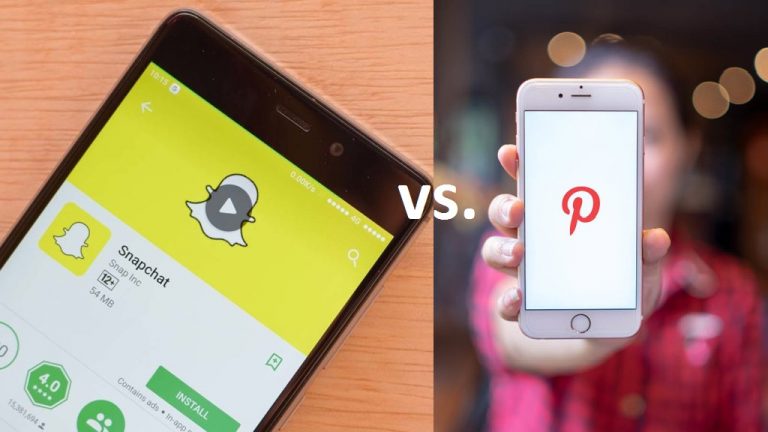- Pinterest is finally outperforming Snap.
- The two stocks have both disappointed investors over the past year.
- Investors ought to buy Pinterest at current prices.
It’s been so long since I last wrote about Snap Inc. (NYSE:SNAP) and SNAP stock that the company now considers itself a camera company.
And here I thought it was a social media platform. Who knew?
I last wrote about Snap for InvestorPlace in December 2019. At the time, I suggested positive free cash flow (FCF) was the key to its future success. I argued that if it could deliver positive FCF in 2020, its stock would be much higher than $16, where it traded at the time.
While Snap didn’t deliver positive FCF in 2020, it did move in the right direction, using $225.5 million, down from $341.4 million in 2019. However, despite negative free cash flow, its share price gained 211% in 2020, closing above $50. It closed in 2021, a few dollars down from its 2020 close.
Snap went public in March 2017, selling shares of its stock at $17. In five years, it’s basically doubled in value. Pinterest (NYSE:PINS) went public in April 2019 at $19 a share. It’s up 39% over nearly 36 months.
It would be fair to say that both are social media disappointments. Only one of them is a buy. That would be Pinterest.
| SNAP | Snap Inc. | $37.05 |
| PINS | $26.34 |
Free Cash Flow Says SNAP Stock Not the Right Call
Pinterest finished fiscal 2021 with FCF of $740 million on $2.58 billion in revenue. That’s an FCF margin of 29%. It generated so much FCF in 2021 because it went from a net loss of $128.3 million to a profit of $316.4 million.
In 2021, Snap delivered positive FCF of $223.0 million, up from -$225.5 million a year earlier. Its FCF margin is 5.4%, or about one-fifth of Pinterest’s. Yet Snap trades at 13.3 times sales compared to 6.9x for Pinterest.
As for the key business metrics, Snap’s daily active users (DAUs) at the end of 2021 were 319 million, 20% higher year-over-year and 4.2% higher sequentially. In addition, its average revenue per user was $4.06.
Pinterest’s monthly active users declined 6% YOY to 431 million and 2.9% on a sequential basis. However, its average revenue per user (ARPU) in Q4 2021 was $1.93, 23% higher than a year earlier and 36% higher on a sequential basis. As a result, Pinterest’s fourth quarter has gone from $1.06 in Q4 2018 to $1.22 in Q4 2019 to $1.57 in Q4 2020 and $1.93 in Q4 2021.
So, despite three consecutive quarters of sequential declines in its MAUs, its ARPU has increased in all three quarters. It’s making more from less.
From where I sit, Pinterest remains the social media platform of the two with greater potential.
Pinterest’s Got Global Ambitions
In 2021, Snap generated 72% of its $4.12 billion in revenue from North America. The rest is outside North America. Pinterest generated 78% of its $2.58 billion in 2021 revenue from the U.S., with international sales accounting for the rest.
Both companies have relatively mature businesses on this side of the ocean, providing both with plenty of potential overseas.
In the fourth quarter, Snap’s ARPU from Europe was $2.54, while the Rest of the World’s ARPU was $1.12. North America was $9.58. North America and Europe both had 33% YOY ARPU growth in Q4 2021.
Pinterest’s U.S. ARPU in Q4 2021 was $7.43, 25% higher than a year earlier. Likewise, its international ARPU was $0.57, 63% higher than Q4 2020.
You can look at this in two ways.
First, you could say that Snap’s kicking Pinterest’s butt in North America — 33% growth versus 25% — or Pinterest’s international business has barely scratched the surface.
Here’s what Pinterest had to say on the subject in its Q4 2021 shareholder letter:
“We are designing Pinterest as a go-to shopping destination, where Pinners can not only browse but also discover and purchase products they are inspired by on Pinterest. Catalog uploads were up over 100% Y/Y globally in Q4 and in international markets they were up over 400% Y/Y in Q4, which speaks to the early success we’ve seen expanding shopping to international markets.”
At the company’s recent Pinterest Presents marketing and advertising conference, the company unveiled Checkout, its new tool that allows you to buy something you see while on Pinterest without leaving the site. It’s one of many game changers introduced at the second annual event.
PINS Stock Is the Better Buy
A total of 43 analysts cover SNAP stock. Of those, 31 either rate it a “buy” or “overweight” with a median target price of $53. A total of 34 cover PINS. Of those, only 13 rate it a “buy” or “overweight” with a median target price of $39.
However, despite the concern about Pinterest’s slowing MAUs, the upside targets provide the same potential returns. Not only that but 59% of the analysts covering PINS rate it a “hold” right now compared to 28% for SNAP. Should any of these analysts upgrade PINS, the positive reaction from investors would be considerable.
As recently as September 2021, SNAP traded above $83, the highest point in Snap’s history as a public company. It’s been almost a year since Pinterest traded as high as $88.83.
Of the two stocks, I believe that Pinterest has the irons in the fire, not to mention the financial wherewithal necessary, to get back to the $80s.
On the date of publication, Will Ashworth did not have (either directly or indirectly) any positions in the securities mentioned in this article. The opinions expressed in this article are those of the writer, subject to the InvestorPlace.com Publishing Guidelines.

